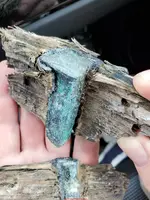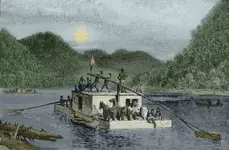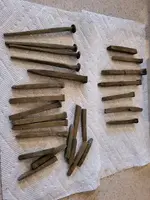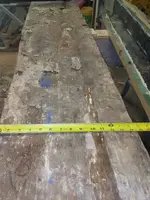In New Orleans you still find barge board houses, most of the board I salvaged from renovation when I lived there was poplar, and I've had planks that were 2 feet wide, three inches thick and 15 feet long, they sold for a very nice price. The one in this pic is a little smaller than that and came from an 1830's house. The earlier barges had wood pins holding them together, you can see the cut off pins just above and below the tape measure. I never found brass spikes in any of the houses I worked on of any age. I did find iron spikes though, and I suspect that since the boats were designed to have a pretty short life span and not going to sea that brass and bronze were not necessary and that cheaper iron spikes were typically used. Just my opinion based on my personal experience, but I would think these came from a ship that was more substantial and more expensive than a river barge
View attachment 1865084



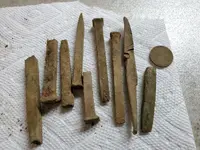

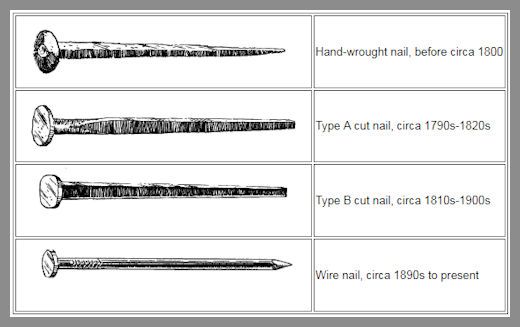

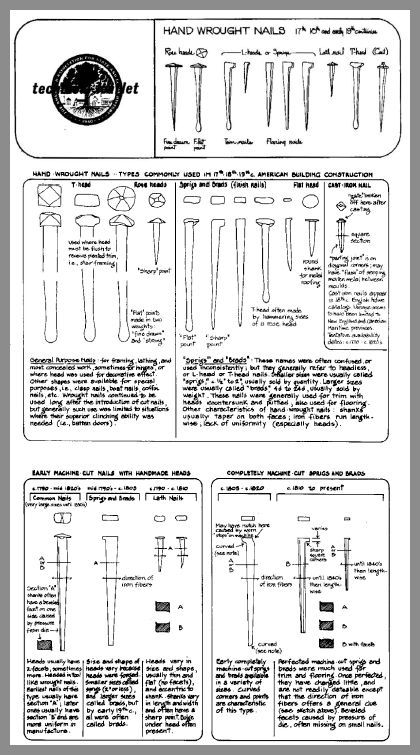
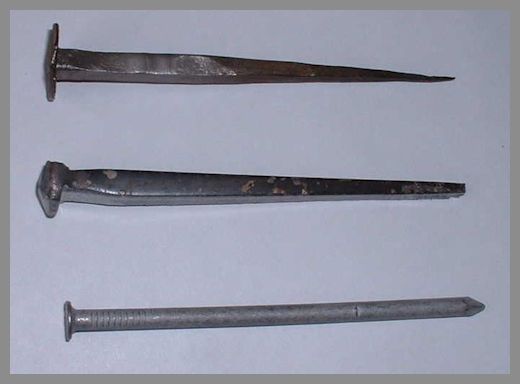
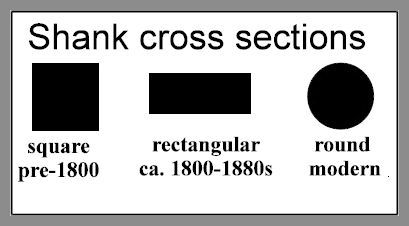
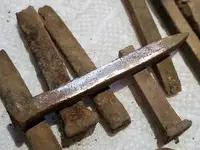
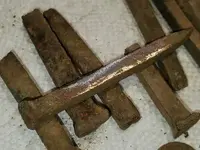
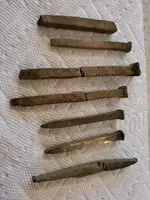

 ?,,,,,brass
?,,,,,brass